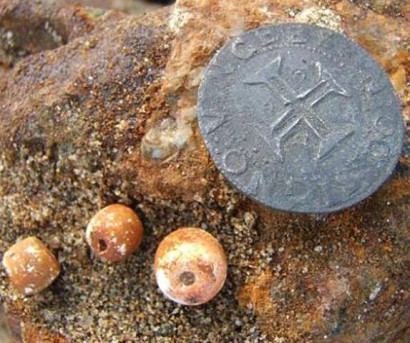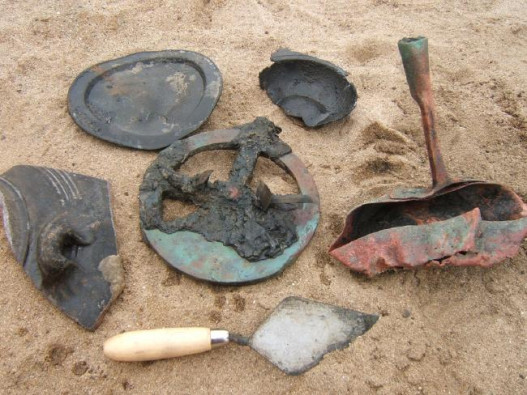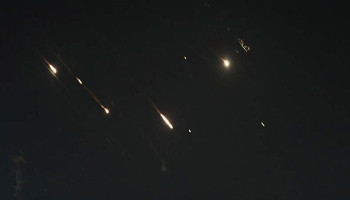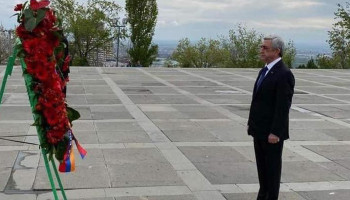
IT IS every archaeologist’s dream — the discovery of a missing ship which disappeared more than 500 years ago with a treasure chest of gold on-board.
Not only did the discovery of the resting place of TheBom Jesus solve one of the biggest maritime mysteries, but for chief archeologist Dieter Noli, it was a history-changing find.
The South African-based scientist told news.com.au he knew when he received a call revealing an usual find along the African desert coastline it would be for something special.
But not even he knew at the time how big that find would be.A ship which had disappeared on its way to India laden with gold in 1533 had vanished, its fate and that of her crew unknown.
Fast forward 500 years and that mystery was closer to being solved when a group of miners hunting diamonds off the Namibian dessert stumbled across some strange objects.
The discovery and what it uncovered continues to captivate with talks now in place for the site to be opened up into a museum featuring what remains of the shipwreck that had been buried under the sand for half a millennia.When miners stumbled across some unusual finds in their hunt for diamonds in April 2008, they knew they had found metal, wood and pipes.
Unsure of what they were dealing with, the company they worked for, Namdeb Diamond Corporation, called in Dr Noli who instantly knew it was a shipwreck.
Dr Noli, the chief archeologist of the southern Africa Institute of Maritime Archaeological Research, said the coastline was notorious for storms so finding a shipwreck was hardly surprising.
However, it was a week into the excavation that a treasure chest laden with gold was found, with the coins indicating it had come from a Portuguese ship which had disappeared in 1533.“It adds new meaning to the concept of the ship having being loaded with gold,” Dr Noli said.
Further investigation revealed the discovery of bronze bowls, and long metal poles later found to be canons.
Dr Noli’s team also found a musket which he estimated to be at least 500 years old and bits of metal revealed a shipwreck was buried in the sand.
The miners who were now working on the site also found compasses, swords, astrological tools, canons and even a time capsule.
Silver coins were found.Dr Noli then contacted Bruno Werz, a marine archeologist who told CNN it was a dream come true to work on a ship from just after the age of exploration.
He also said it was crucially important from world heritage perspective to find a shipwreck which contained material from three continents.
“You can’t describe the feeling of seeing this material and realising how important it is,” he told the broadcaster in an earlier interview.
He also said the large amounts of copper at the site helped preserve a lot of the objects, its weight preventing a lot of it from washing away.
However the ship was “extremely badly battered” by the sea, with little of the original structure of left.A week into the dig, the team found gold coins. a lot of them.
The centuries old coins were in mint condition which Dr Noli believes is down to the ship breaking on rocks, tipping over and the chest with coins inside being buried under the superstructure.
It was these very coins which gave Dr Noli and his team a massive clue.
Within 45 minutes of finding the first gold coin, they had unearthed around 11kg of the treasure, Dr Noli told CNN.
Dated between 1525-38 and in perfect condition, it meant the ship would have had to have set sail during that time.
It also served as proof that the find was the oldest ever shipwreck found in sub-Saharan Africa.WHAT ELSE WAS FOUND
Thousands of Portuguese and Spanish gold coins, Portuguese silver coins, bronze cannons, tonnes of copper ingots, more than 50 elephant tusks, as well as navigational instruments were uncovered.
Dr Noli said more than 2000 gold coins were found in addition to five anchors, three navigational dividers and part of a ship’s compass.
Pewter tableware, copper cooking utensils, swords and muskets were also found.
Only a small part of the structural remains of the ship was uncovered.
Some 5438 artefacts of cultural, scientific and intrinsic value were discovered in total.THE DIAMOND HUNTING AREA
The Namibian coastline, some 18km north of the Orange River mouth, is renowned for its high number of storms and treacherous seas.
The area where the ship was found was called Sperrgebiet, or “forbidden territory,” after the hundreds of German prospectors who ventured to the region in search for diamonds.
Diamond company DeBeers and the Namibian government still run a joint operation in the area, according to CNN and the area remains largely out of sight.
The remains of the shipwreck remain protected by mining security with limited numbers allowed onto the site.
An idea for a museum has been floated but it remains to be seen whether it will occur.





















